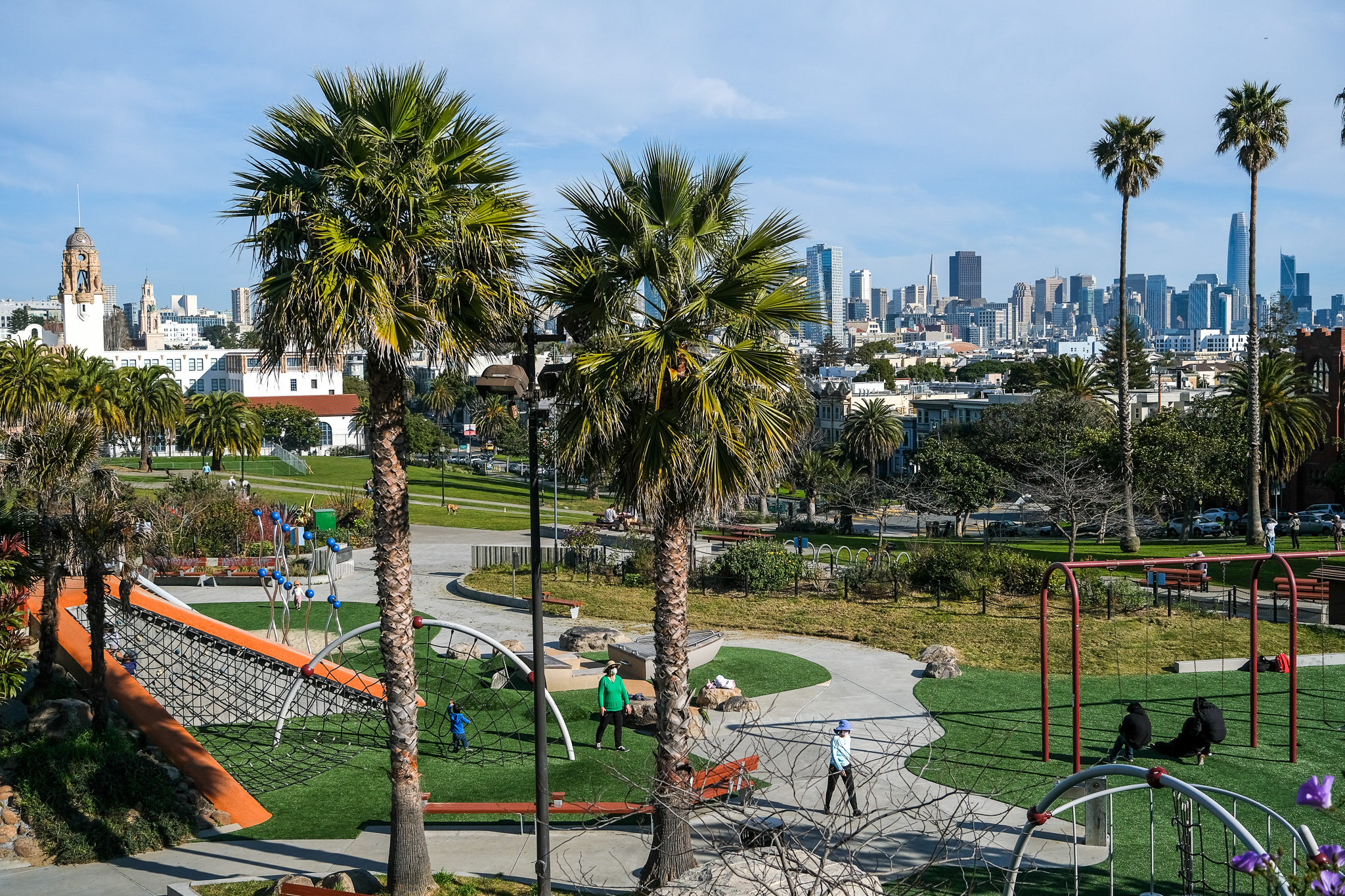It’s hard to imagine Dolores Street or the Embarcadero without palm trees. These towering, frond-topped columns—which somehow came to symbolize glamor, relaxation and the California lifestyle—are practically synonymous with the Golden State.
And yet a recent report about the death of Los Angeles’ iconic palm population and the treemageddon wrought by two weeks of atmospheric rivers and bomb cyclones has us wondering: Could pests, shifting weather patterns and changes in public policy eventually lead to a palm-less San Francisco?
LA’s palm population is rapidly declining due to three main threats: weevils, fungus and the city’s preference for native plants (the only type of palm native to California is Southern California’s fan palm). Learning how SF palms fare in the face of these challenges also begs the question: Should they be here at all?
Weevils
The South American palm weevil is the most destructive insect to palms, according to The Los Angeles Times. Most susceptible to the palm weevil are Canary Island date palms—and we have 587 of them in San Francisco.
Those beautiful palms lining Dolores Street? They are Canary Island date palms, beloved enough for the city to officially designated them as trees with landmark status. Yes, that’s a thing. And of the 40 “heritage” trees in the city, 25 are palms, according to Scott Wheeler, manager of The Urban Arborist.
But despite their heritage status, palms are not native to San Francisco—and that brings its own challenges.
“Introducing non-native plants like palms can be really problematic because they bring along their own pathogens and pests,” said Eddie Bartley, president of the Yerba Buena chapter of the California Native Plant Society.
Fortunately, we don’t see much of the palm weevil in San Francisco, and nursery stock from Southern California is quarantined before coming to the city, according to Wheeler.
Fungus
The bigger concern for San Francisco palms is a fungus called Fusarium. Once a palm is infected, it’s impossible to eradicate.
Complicating matters is the fact that Fusarium is released through spores, and wind can blow spores onto neighboring trees when an infected one is cut down, Wheeler explained.
A spate of Fusarium sickened some of the Canary Island date palms on the Embarcadero in 2013, and the trees that died were replaced with a hardier palm species. That localized outbreak has not spread to other palms in the city so far, but that’s always a possibility.
Storms
Our palms might be (mostly) safe from fungus and weevils, how about those recent storms?
More than 300 trees fell across the city in January due to the heavy rainfall and high winds—as compared to 27 for the entire month of December—so you’d be right to worry.
Yet palm trees have been surprisingly resilient. Despite their shallow roots and grass-like trunk (palms technically aren’t trees at all), they’re tough to topple.
“They have done well in storms,” said Joe McBride, emeritus professor of landscape architecture and environmental planning at the University of California Berkeley. “Palms have adapted to a higher wind velocity.”
San Francisco’s iconic palms seem safe for now, and the city goes out of its way to protect them. The heritage palms on Dolores Street had cages of plastic netting around them during recent street repairs, according to Wheeler, so tools and equipment wouldn’t be placed on the ground close enough to impact their root system.
Do Palms Belong?
Palms are not native to San Francisco—they first arrived in the city in the 1700s when Spanish missionaries planted them to have their fronds for use in religious ceremonies, according to McBride.
The palms that line San Francisco’s streets came centuries later, through civic projects like the one that planted them along the Embarcadero after one of the biggest disasters in the city’s history. “They were meant to symbolize the rebirth of the city after the Loma Prieta quake,” McBride said.
But such endeavors were not without criticism. “As mayor, [Gavin] Newsom spent millions planting palms,” Bartley said. “It sparked a long debate about what belongs here.”
Palms offer little in terms of climate resilience since they don’t store a lot of carbon or offer much shade, according to Joshua Klipp, an urban forestry advocate who has volunteered with the Friends of the Urban Forest for 12 years.
“They’re like a spindly Q-tip,” Klipp said.
Given that San Francisco has the smallest urban canopy of any major city, according to Klipp, other trees might make more sense.
“Palms were taken off the approved list of street trees two or three years ago,” Klipp said. So when a non-heritage street palm dies, the city won’t replace it with another palm—but that doesn’t prevent them from growing in parks or private property.
Meanwhile, San Francisco’s urban canopy continues to shrink, even though planting 30,000 street trees by 2024 is part of the city’s Climate Action Plan.
“We’re not planting half as many trees to keep up with the rate of removal,” Klipp said. “We’re headed in the opposite direction that we need to be going.”
